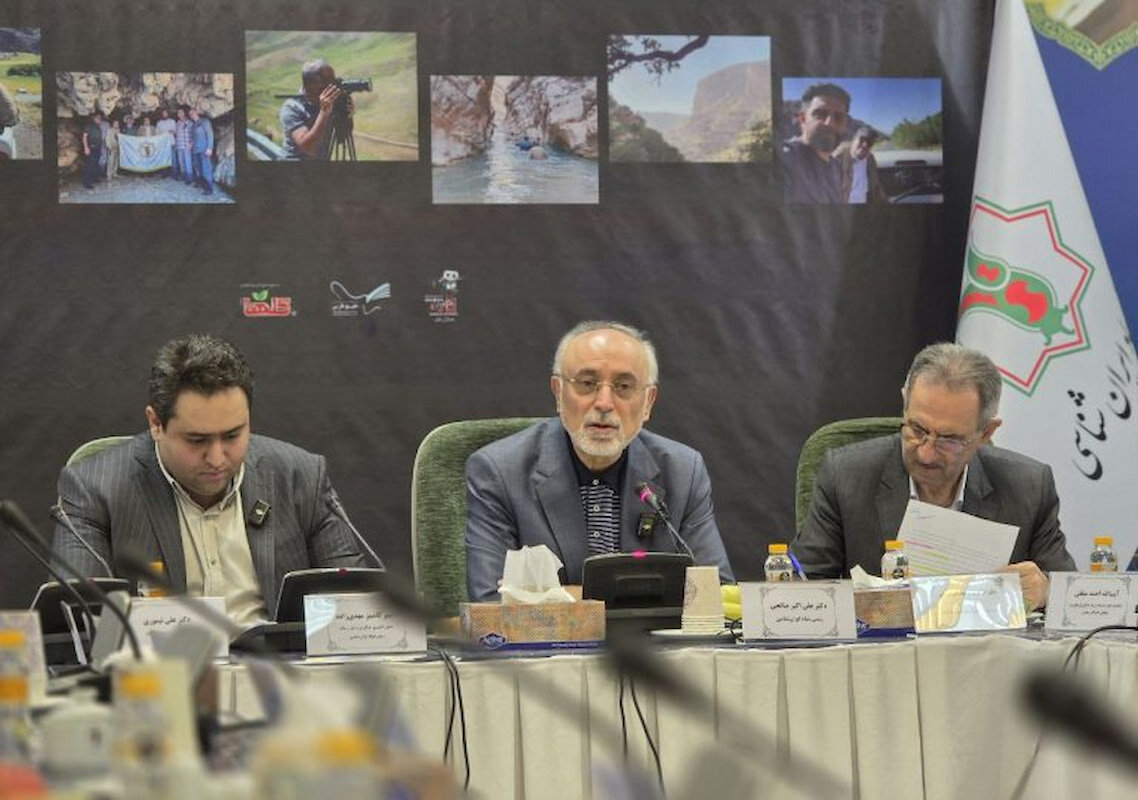‘Face of Iran’ unveiled at Iranology Foundation
A new geotourism documentary series named “Face of Iran” was unveiled on Tuesday at the Iranology Foundation in Tehran, with the aim of promoting the country’s cultural and natural heritage as a tourism and economic asset.

The ceremony was attended by Ali Akbar Salehi, head of the Iranology Foundation, who praised the production team and highlighted the role of cultural identity in promoting the ancient land. “Iran is a vessel that we must protect with all our being. If the pillar of Iran is removed, nothing remains under this tent,” Salehi said.
Referring to Iran’s history, Salehi said that during the Achaemenid Empire more than half of the world’s population lived under Iranian rule. He described Iran as a “mosaic” of diverse cultures, dialects, foods and landscapes from east to west and north to south.
Salehi said the foundation has broad audiences ranging from children to scholars and expatriates, and one of its major programs is producing “Face of Iran” documentaries for each province to showcase lesser-known aspects of the country.
Kambiz Mahdizadeh, media adviser to the foundation and director of the documentary, said the project aims to highlight Iran’s landscapes, myths and traditions at a time when, he said, negative perceptions of the country are spreading internationally.
Our economy relies mainly in petrodollars, but oil will run out, Mahdizadeh said. “They can sanction our oil, but they cannot sanction our mountains, forests, deserts and plains…. The future of Iran’s economy lies in culture and tourism.”
He added that the first episode of the series, dedicated to Lorestan province, includes footage from sites mainly filmed for the first time in the country.
Mahdizadeh concluded that the documentary’s message is that Iran’s natural and cultural beauty constitutes a sustainable wealth. “Let us rediscover Iran, and re-introduce it to the world,” he said.
Elsewhere in his remarks Salehi turned the spotlight on the Prehistoric Sites of the Khorramabad Valley, which was registered on the UNESCO World Heritage list earlier this year.This marks a historic first for Iran -- the first time a cluster of sites primarily representing the Paleolithic period has received this prestigious recognition -- and a transformative moment for the global archaeological community, Salehi underlined.
Home to various nomads and tribal communities, Lorestan was inhabited by Iranian Indo-European peoples, including the Medes, c. 1000 BC. Cimmerians and Scythians intermittently ruled the region from about 700 to 625 BC. The Luristan (Lorestan) Bronzes noted for their eclectic array of Assyrian, Babylonian, and Iranian artistic motifs, date from this turbulent period. Moreover, Lorestan was incorporated into the growing Achaemenid Empire in about 540 BC and successively was part of the Seleucid, Parthian, and Sasanid dynasties.

Write your comment.